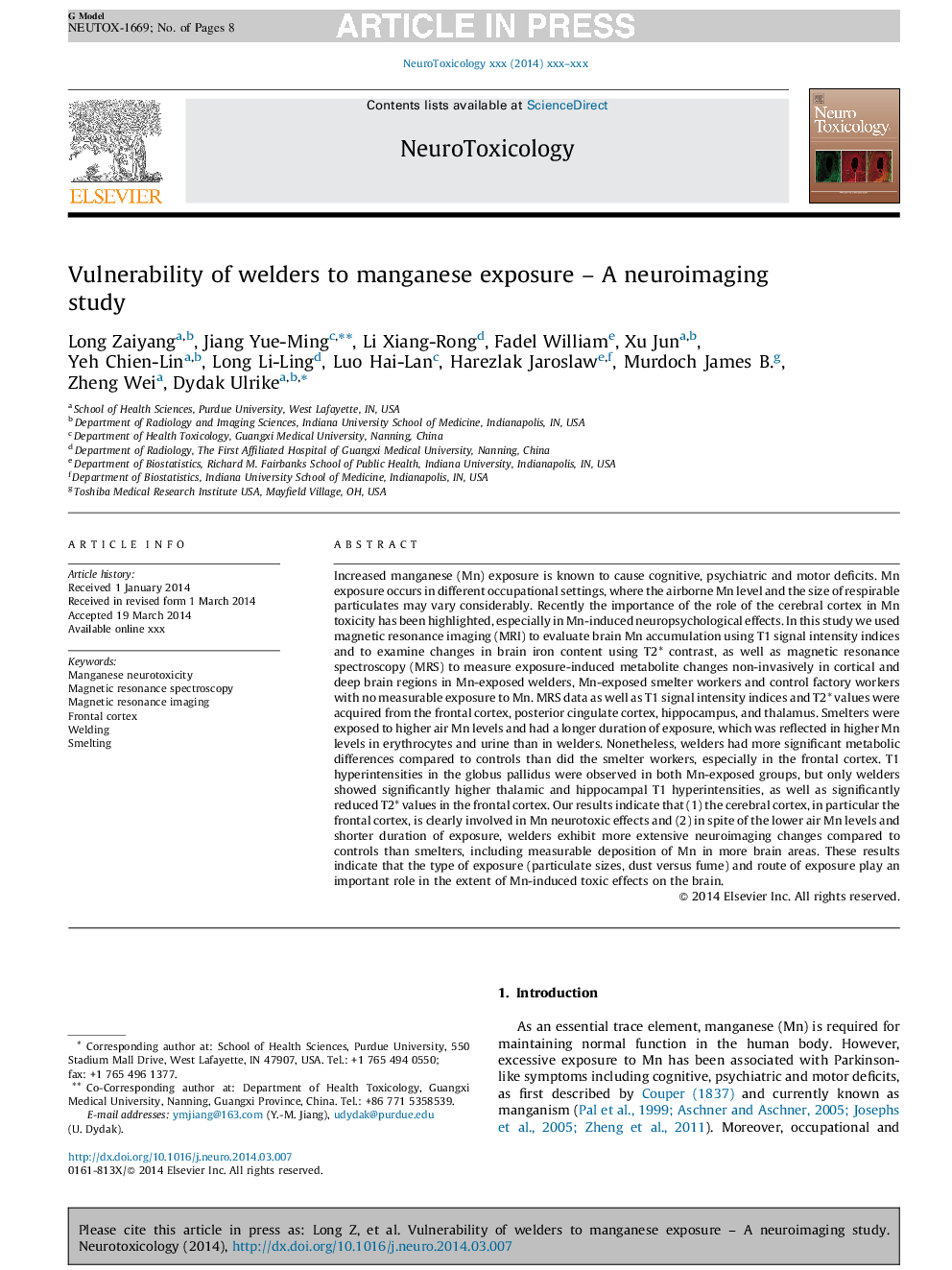| کد مقاله | کد نشریه | سال انتشار | مقاله انگلیسی | نسخه تمام متن |
|---|---|---|---|---|
| 5854938 | 1562049 | 2014 | 8 صفحه PDF | دانلود رایگان |
عنوان انگلیسی مقاله ISI
Vulnerability of welders to manganese exposure - A neuroimaging study
ترجمه فارسی عنوان
آسیب پذیری جوشکارها در معرض قرار گرفتن در معرض منگنز - مطالعه ی عصبی
دانلود مقاله + سفارش ترجمه
دانلود مقاله ISI انگلیسی
رایگان برای ایرانیان
کلمات کلیدی
عصبی منگنز، طیف سنجی رزونانس مغناطیسی، تصویربرداری رزونانس مغناطیسی، قشر جلویی، جوشکاری، ذوب شدن،
موضوعات مرتبط
علوم زیستی و بیوفناوری
علوم محیط زیست
بهداشت، سم شناسی و جهش زایی
چکیده انگلیسی
Increased manganese (Mn) exposure is known to cause cognitive, psychiatric and motor deficits. Mn exposure occurs in different occupational settings, where the airborne Mn level and the size of respirable particulates may vary considerably. Recently the importance of the role of the cerebral cortex in Mn toxicity has been highlighted, especially in Mn-induced neuropsychological effects. In this study we used magnetic resonance imaging (MRI) to evaluate brain Mn accumulation using T1 signal intensity indices and to examine changes in brain iron content using T2* contrast, as well as magnetic resonance spectroscopy (MRS) to measure exposure-induced metabolite changes non-invasively in cortical and deep brain regions in Mn-exposed welders, Mn-exposed smelter workers and control factory workers with no measurable exposure to Mn. MRS data as well as T1 signal intensity indices and T2* values were acquired from the frontal cortex, posterior cingulate cortex, hippocampus, and thalamus. Smelters were exposed to higher air Mn levels and had a longer duration of exposure, which was reflected in higher Mn levels in erythrocytes and urine than in welders. Nonetheless, welders had more significant metabolic differences compared to controls than did the smelter workers, especially in the frontal cortex. T1 hyperintensities in the globus pallidus were observed in both Mn-exposed groups, but only welders showed significantly higher thalamic and hippocampal T1 hyperintensities, as well as significantly reduced T2* values in the frontal cortex. Our results indicate that (1) the cerebral cortex, in particular the frontal cortex, is clearly involved in Mn neurotoxic effects and (2) in spite of the lower air Mn levels and shorter duration of exposure, welders exhibit more extensive neuroimaging changes compared to controls than smelters, including measurable deposition of Mn in more brain areas. These results indicate that the type of exposure (particulate sizes, dust versus fume) and route of exposure play an important role in the extent of Mn-induced toxic effects on the brain.
ناشر
Database: Elsevier - ScienceDirect (ساینس دایرکت)
Journal: NeuroToxicology - Volume 45, December 2014, Pages 285-292
Journal: NeuroToxicology - Volume 45, December 2014, Pages 285-292
نویسندگان
Long Zaiyang, Jiang Yue-Ming, Li Xiang-Rong, Fadel William, Xu Jun, Yeh Chien-Lin, Long Li-Ling, Luo Hai-Lan, Harezlak Jaroslaw, Murdoch James B., Zheng Wei, Dydak Ulrike,
